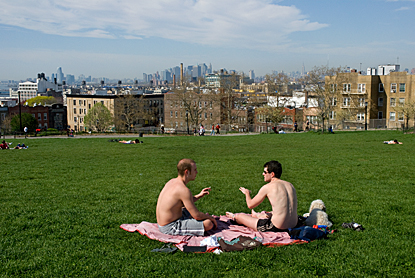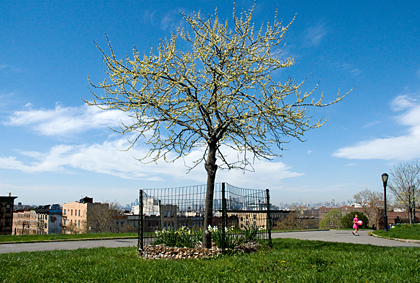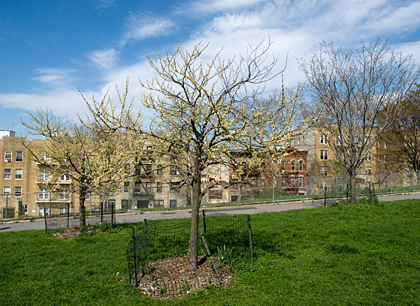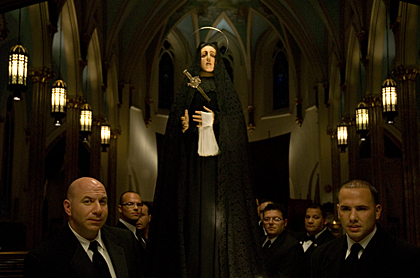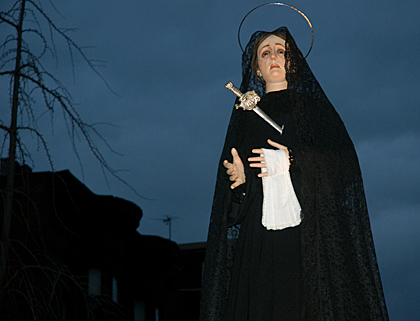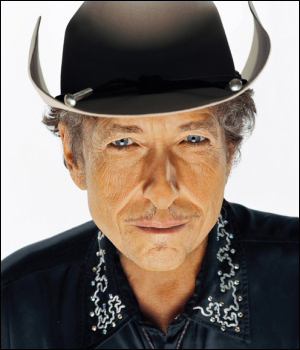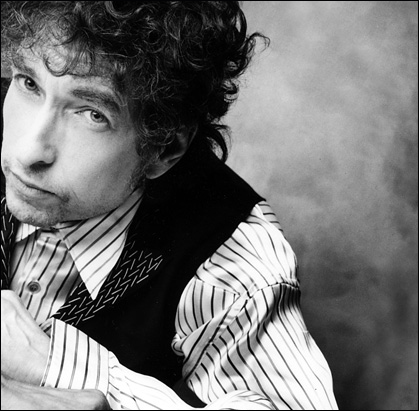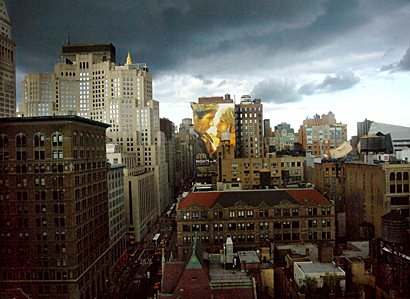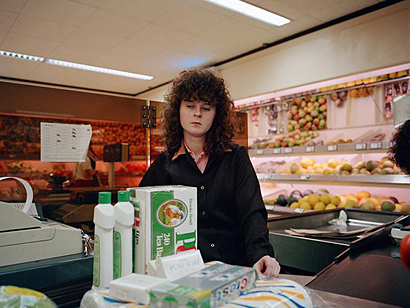 From New Europe, 1986-1992, Paul Graham, All rights reserved
From New Europe, 1986-1992, Paul Graham, All rights reservedAfter all these years of looking at photographs, it's hard to believe I just last week discovered the work of British shooter
Paul Graham . Since the early 80s, Graham has been applying his poetic sensibilities & colorist flair to documentary projects -- England's
A-1 highway,
the troubles in Northern Ireland,
jobless people waiting at the employment office -- & later to more psychological explorations, e.g.
people watching TV. After 1996, Graham also began to experiment stylistically. His
American Night breaks completely with conventional documentary style by juxtaposing faded & oversaturated images as a way of exploring class differences in the U.S. His latest project,
A shimmer of possibility (2006), seems to turn in an entirely new direction (I'll have a lot more to say on that shortly).
The phrase "straight photography" may be best understood as an oxymoron. Still, I'm immediately drawn to Graham’s earlier work, which reveals without sentimentality the restlessness & malaise of ordinary young Europeans. These pictures avoid stylistic tricks, but they also reveal a delight in natural beauty -- indeed, in the conscious arrangement of shape, color & light that makes the pictures successful. Like earlier artist photographers
Robert Frank &
William Eggleston, Graham selects & isolates epiphanic moments intuitively understood to represent more than themselves & then uses all of his considerable artistry to burn them into our brains. At their best, such pictures are, in Graham's words, "...able to pierce the opaque threshold of the present."
Yet the pictures are not truly "straight." Does that mean we should call them dishonest? A better question might be: how much do these highly symbolic one-time framed moments actually tell a viewer about the person or place pictured? How much, I mean, can this style, which is based in photojournalism but appropriates the prerogatives of art, inform us without adding closely related narrative-building pictures or captions or text? For Graham, photojournalism, with rare but important exceptions is “… pablum, and aspires to nothing beyond well-worn vernacular.” Specific information is not his intention at all. Neither is inflated meaning. So what is he trying to do?
In a
wonderful interview on his site, Graham makes it clear his early work was inspired by photographers “… from 1966 to 1976, mostly American, let’s say from
‘New Documents’ to
‘New Topographics,’ “ who both adopted & subverted the straight documentary style. These photographers -- Diane Arbus, Garry Winogrand, Lee Friedlander, Stephen Shore, Robert Adams, Ed Ruscha – committed themselves to the idea that “… making images of life as it happens, lies at the very core of the medium. ” At the same time, they were wary of the cult of the "Great Picture.” “Photographers have been trying for years to make bodies of work where images work together to build up a coherent statement.,” says Graham. “ It’s not about one great picture by Robert Adams; it’s about twenty or thirty pictures that form a sensitive, intelligent reflection of the world. …”
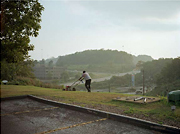
 These & photos below from A shimmer of possibility, Paul Graham, All rights reservedA shimmer of possibility
These & photos below from A shimmer of possibility, Paul Graham, All rights reservedA shimmer of possibility takes this idea a giant step further. Graham's monumental 12-book work, recently published by Steidl, with volumes ranging between relatively extended passages of more than 20 pictures over 60 pages, to a book that contains just one, doesn't necessarily play well on the internet (visit
the 9-picture spread here for an approximation). Still the little I've seen has convinced me of the idea's radical freshness.
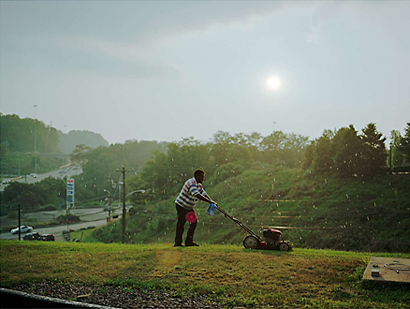
Graham says the idea for the project came to him after reading the short stories of
Anton Chekhov. With his brilliantly desultory character-driven stories Chekhov was getting at something Graham had been feeling about his pictures -- that their essence was in the mundane
potential for action, not the action, that their locus lay
between the plot points,
on the way to the significant gesture;
before the summation. He tried to adopt Chekhov's approach, described as follows by Virginia Woolf : "He is not heroic, he is aware that modern life is full of nondescript melancholy, of discomfort, of queer relationships which beget emotions that are half-ludicrous and yet painful and that an inconclusive ending for all these impulses is much more usual than anything extreme."
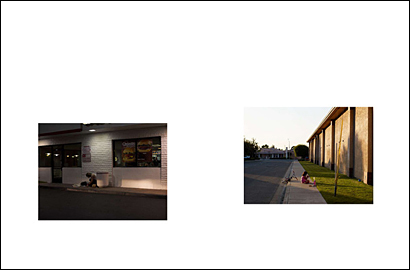
Graham wanted to express this in visual terms. He had been driving around the U.S. taking pictures for much of 2004 -2006. In his essay,
Sliding Sight, Setting Suns, David Chandler describes Graham's method: "...driving to and from places, visiting and not visiting; the locations, towns and cities becoming less and less relevant and more and more representative. He would drive, and stop, and walk, sometimes for a few minutes, at other times for hours, maintaining an unstructured and intuitive itinerary, and photographing all the while, keeping restraint in mind, never dwelling too long on any one subject or being drawn too far beyond that initial point of fascination. "
Graham realized that all his half-coherent attempts to photographically crystallize meaning were in fact themselves the meaning. And later that this simple shift in attitude meant a new kind of presentation.
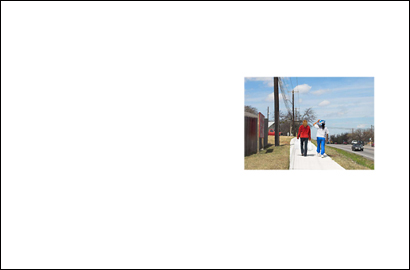
In this work Graham by no means abandons artifice. Many of the images, though unfussy, reflect a lifetime of pointed, symbolic looking. Graham combines two, three or even four sequences in a single book, uses montage, variation of image size, repetition, digression, opposition, pauses, juxtaposition & many other techniques. As the Steidl blurb puts it: "These filmic haikus avoid the forceful summation we usually find in photography, shunning any tidy packaging of the world into perfect images. Instead, life simply flows around and past us while we stand and stare..."
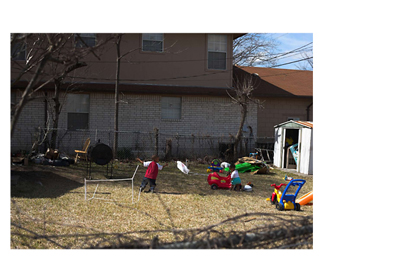
I like ending with the reference to haiku. Although haiku is popularly perceived in the U.S. as the easiest form of poetry -- our poetry for dummies -- it's really one of the most difficult. The idea of haiku is as much about the poetic revelation as it is about the words that express it. Historically, the form has been linked to the moment of
sudden enlightenment in Zen Buddhism. Like the best sequences in "A shimmer..." , haiku is transmitted directly from the world to its author, who gratefully receives it as a gift.

